[ad_1]
Where’s the first place you go to find a local business?
Google.
Understanding SEO for Google Maps will make your local business a lot more visible on the search engine. And if you get your Google Maps rankings at the top of relevant search results, you can expect to generate far more traffic – which results in far more customers.
Not sure where to get started?
This guide covers everything you need to do to boost your Google Maps business listings. Every step is easy and can make a big impact on your business.
- Why Your Business Needs to Rank High On Google Maps
- How to Improve SEO for Google Maps
- How to Improve SEO for Google Maps With Your Website
Why Your Business Needs to Rank High On Google Maps
If you want to achieve better local SEO results, ranking well on Google Maps is one of the best things your business can do.
67% of consumers prefer Google Maps as their navigation app of choice. When people are searching for a place to go, they rarely look beyond the first few results. So, optimizing your Google Maps listing to appear at the top for relevant searches can bring a lot more feet through your business’s door.
Consumers also tend to discover businesses on Google Maps more frequently (84% of the time) through keyword searches rather than direct searches using the business name. This means getting your local business listing ranking high on Google Maps can help you access a lot more new customers who never knew you existed.
Another benefit of ranking on Google Maps is that the top three listings also appear in regular Google Search results. Since 46% of Google searches have local intent, appearing in the “Local 3-Pack” can significantly increase your business’s visibility and traffic.
Earning a higher rank on Google Maps improves the overall quality of your listing and provides multiple ways for consumers to engage with your business. Considering that 86% of consumers use Google Maps to find businesses, this presents many opportunities to boost engagement and attract potential customers.
Above: Guess which business gets the most new customers from a search like this? This is why you want to improve your Google Maps SEO.
How to Improve SEO for Google Maps
The first step to boosting your Google Maps SEO is developing a solid Google Maps listing. Here are the steps you can take to do this.
1. Add Your Business to Google Maps
Adding your business to Google Maps is the crucial first step in getting your business listing to rank higher. Without a Google Maps listing, you won’t be able to improve your ranking or effectively market your business on search engines.
Start by visiting Google.com/maps or using the Google Maps app on your smartphone. Then, search for your business name.
If your business name appears in the drop-down menu along with a location, it means you already have a listing. In that case, you can move on to the next section.
However, if your business name doesn’t show up, don’t worry! You’ll find an option in the drop-down menu that says “add a missing place.”
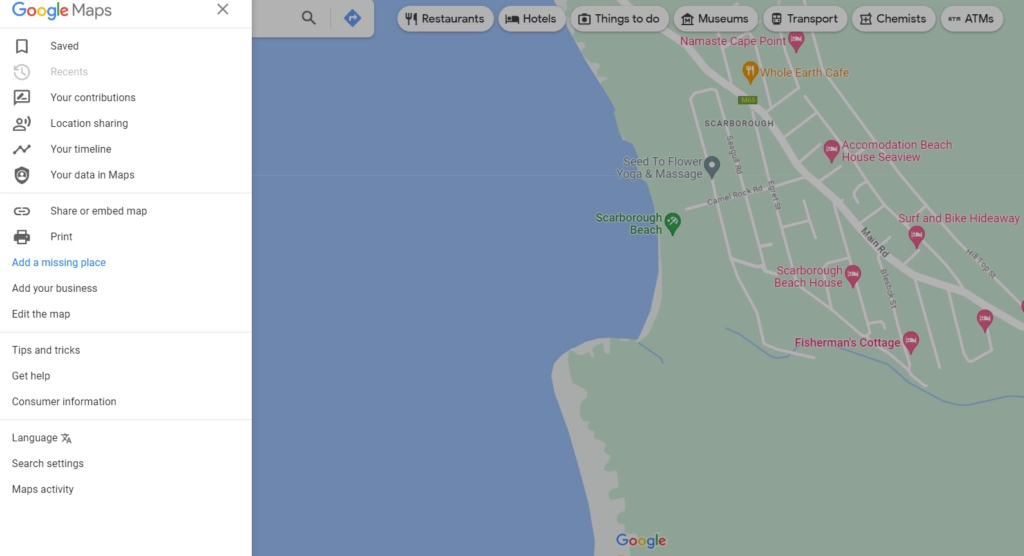
Click on that option, and you’ll be prompted to provide essential details such as your business name, category, and location.
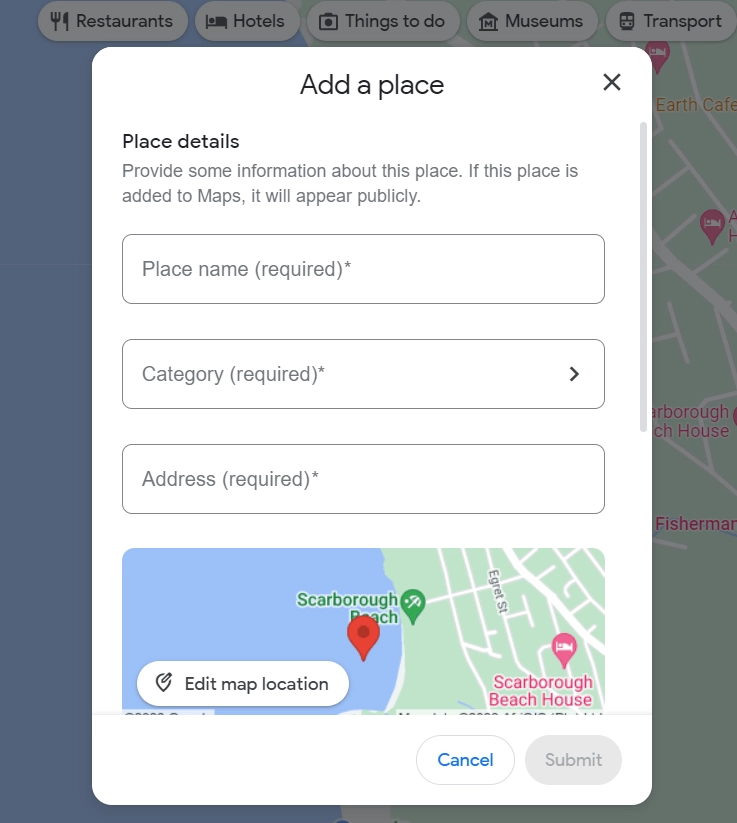
It’s worth noting that anyone around the world can add a business to Google Maps. So, even if you haven’t done it yourself, it’s crucial to check and ensure that your business listing doesn’t already exist.
Rest assured, though, that whoever adds your business to Google Maps doesn’t have control over the listing. Only the person who claims the listing by proving ownership of the business will have that control. That’s something we’ll cover in the next steps.
2. Claim Your Listing
Claiming your listing allows you to provide more detailed information about your business, which ultimately helps improve its ranking on Google Maps.
To claim your business listing on Google Maps, you must have a free Google Business profile.
If you already have an account, it’s simple. Just find your Google Maps business listing, click on the option that says “Claim this business” or “Own this business?” and follow the instructions provided.
In case you don’t have a Google Business profile, you can create an account here.
3. Update Your Google Maps Listing
Now that you have a Google Maps listing and a linked Google Business profile, it’s time to optimize it for better rankings.
Log in to your Google Business profile, where you’ll find a dashboard with different tabs.
Select the “Info” tab, which contains essential details about your business, such as name, category, address, service area, hours, phone number, website, products, services, attributes, and description.
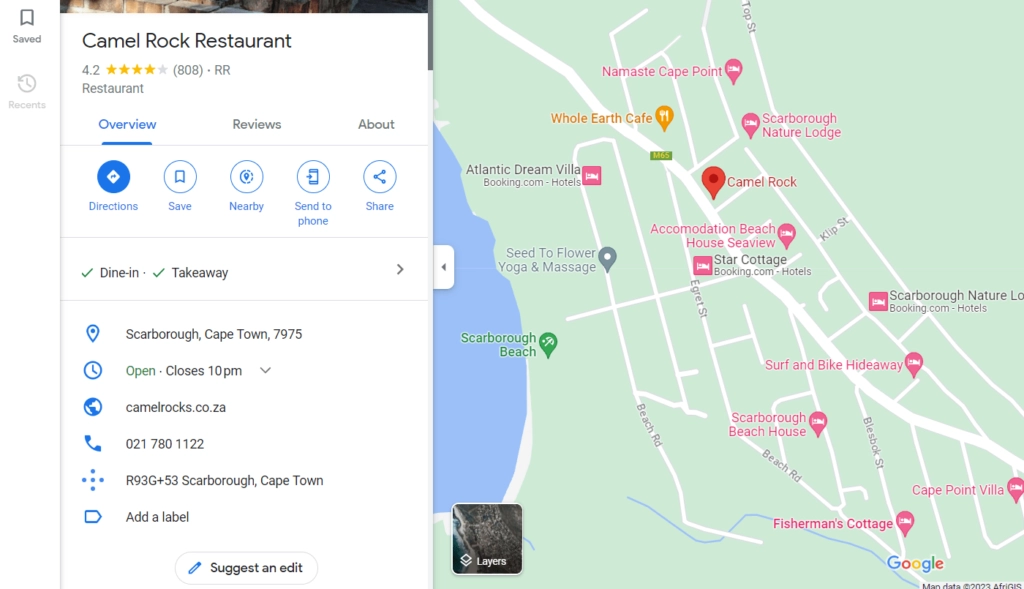
Follow these tips to optimize your Google Business profile sections for higher ranking on Google Maps.
Be consistent with your business name and address
Consistency across the web builds trust, so ensure that your business name matches exactly across your Google Business dashboard, website, Yelp listing, Facebook profile, and other online platforms. The same applies to your address information.
Use a local phone number
Google prefers local phone numbers with the area code of your location, as it helps verify your business’s location and improves your ranking on Google Maps.
If you use call tracking, use a tracked number as your primary business phone number. However, keep your main number as a secondary option. This way, you can track the effectiveness of your listing while allowing Google to match your number with the one on your website and other listings.
Keep your hours updated
Regularly update your business hours on your Google Maps listing to signal to Google that you are active and trustworthy. This also prevents potential customers from visiting your store during closed hours, which can lead to negative reviews.
Write a compelling business description
Craft a description that provides an overview of your business and unique attributes to attract searchers. Use a tone that aligns with your brand and includes relevant keywords to improve your listing’s visibility for product and service searches.
Properly categorize your business
Choose the primary category that best represents your core business offering. Add secondary categories if applicable. Remember that custom categories cannot be added, but typing your main offering will provide a dropdown menu of relevant categories to choose from.
4. Optimize Your Listing With Photos
Adding photos to your Google Maps business listing is crucial.
Uploading photos signals to Google that your listing is active and deserves higher rankings. It shows that you are actively engaged with your listing and providing valuable content.
Google’s photo-recognition technology is evolving, and images are increasingly being displayed in local search results. Adding photos to your listing increases the chances of your business being visually showcased to potential customers.
Google also values what consumers love, and consumers love photos. By including appealing and high-quality photos, you align with consumer preferences, which can positively impact your ranking on Google Maps.
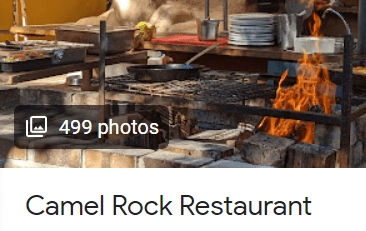
So, to improve your Google Maps ranking with photos, follow these steps:
- Access your Google Business dashboard and navigate to the “Photos” tab.
- Look for the blue circle with a white plus sign and click on it.
- You can now easily drag and drop multiple photos and/or videos at once to your listing. Make sure to choose captivating visuals that truly represent the experience of being at your business.
Remember, quality is essential. Aim to upload high-resolution and eye-catching images that leave a positive impression on potential customers.
5. Encourage Reviews On Google
Google Maps values what customers love, and positive reviews are a big factor in determining rankings.
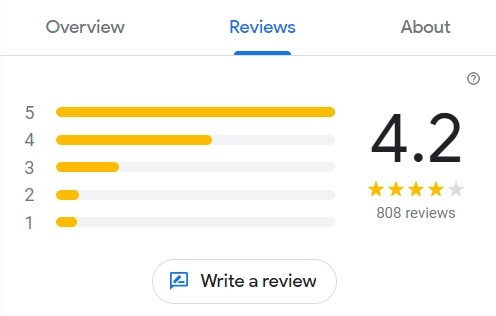
So, how can you get more Google reviews?
Be proactive in asking for reviews
Creating a business listing on Google Maps opens the door for customers to leave reviews. However, you can’t expect reviews to pour in automatically.
Ask your satisfied customers to share their experiences by leaving a review on your Google Maps listing.
Respond to reviews
Engage with your customers by responding to their reviews, whether they are positive or negative.
Acknowledging and addressing their feedback demonstrates your attentiveness and dedication to customer satisfaction. This not only encourages more customers to leave reviews but also shows potential customers how well you handle any issues that may arise.
Embrace the power of reviews
While the thought of reviews might be intimidating, negative reviews are often rare (unless your service is truly abysmal). Remember that even negative reviews can be an opportunity for improvement.
By responding appropriately and offering solutions, you can mitigate the impact of negative reviews and potentially turn them into positive experiences.
By actively seeking reviews and responding to them, you create a feedback loop that fosters customer engagement and boosts your credibility on Google Maps. Positive reviews signal to both Google and potential customers that your business is reputable and worthy of higher rankings.
6. Consolidate Your Listings
Google tends to devalue businesses with multiple phone numbers or locations listed for a single business. Having duplicate listings or irrelevant information can confuse both Google and potential customers, leading to lower rankings for your business.
To ensure that your business listing ranks higher on Google Maps, it’s crucial to weed out any duplicate listings or unnecessary information. Here’s what you can do:
- Identify duplicate listings: Search for your business name and variations of it on Google Maps. If you find multiple listings that represent the same business, it’s important to consolidate them into one true listing.
- Claim and verify your primary listing: Determine which listing represents your actual business and claim ownership of it. Verify your ownership through the Google Business platform to gain control over the listing.
- Update and optimize your primary listing: Once you have claimed your primary listing, review and update all the information to ensure accuracy and consistency. Make sure to include relevant details such as your business name, address, phone number, and website.
How to Improve SEO for Google Maps With Your Website
We’ve covered the basic steps your local business needs to take to boost its Google Maps SEO. However, there are more things you can do to achieve better results – especially when it comes to your website.
Here are some of the best SEO tips for Google Maps that you can do outside your Google Business profile.
Make Your Website Responsive
To rank higher on Google Maps, you’ll want to have a responsive website. Even though the two platforms aren’t directly related, it still makes a major difference.
When users find your business listing on Google Maps, they can click on the website link to learn more. Since around 60% of searches happen on mobile devices, your website must function seamlessly across all devices and screen sizes.
A responsive website adapts to different screens, providing a smooth user experience. If your website is not responsive, it may have issues like broken links, slow loading times, or the need for zooming in and out. These problems could negatively impact your Google Maps ranking.
By making your website responsive, you enhance the user experience and increase the chances of visitors staying on your site longer. This positive engagement signals to Google that your website is valuable and relevant, leading to a higher ranking on Google Maps.
Use Local Keywords On Your Website
Targeting your website for local search not only improves its ranking on Google Search but also impacts the ranking of your Google Maps business listing.
Incorporate location-based keywords into important pages like the homepage, about us, contact us, products/services, and blog posts.
Don’t limit the keywords to page titles; include them in headings, body text, image tags, captions, and URLs. By doing so, you align your website with relevant local searches and increase its visibility to users searching for businesses in your area.
Including local keywords helps Google understand the geographical relevance of your website, making it more likely to appear in local search results and improving your Google Maps ranking.
Embed a Google Map On Your Website
When you embed a Google Map on your website, particularly on the contact us page, you’re reinforcing your business’s location information to Google. It confirms that your business is situated where your Google Maps listing indicates.
To embed a Google map, search for your business name on Google Maps. In your listing, click “Share” and choose the “Embed a map” tab. Copy the provided link and paste it onto your business’s contact page on your website.
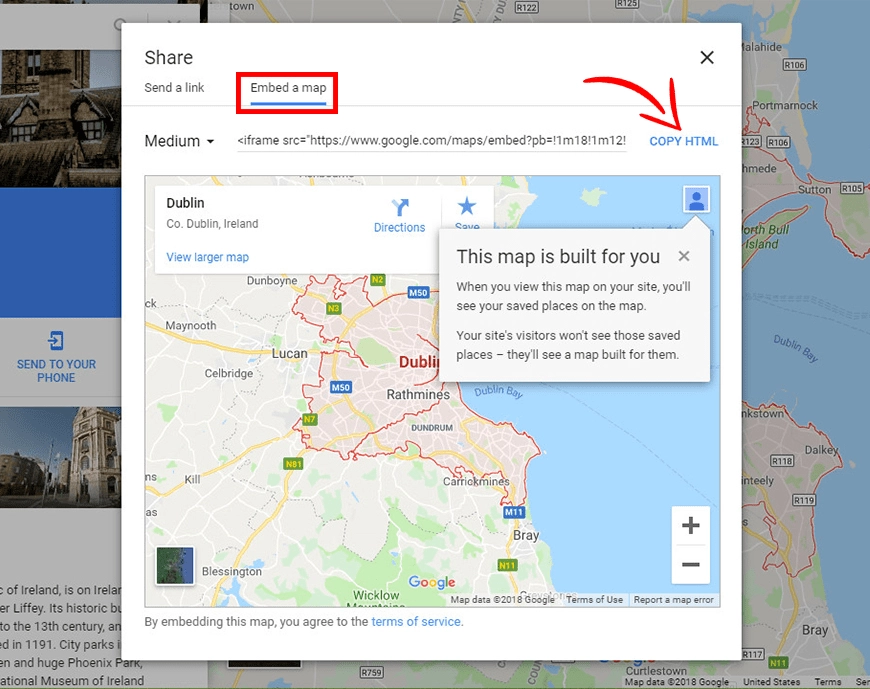
By incorporating a Google map, you enhance the credibility and accuracy of your business’s location, signaling to Google that your listing is reliable and relevant. This, in turn, contributes to a higher ranking on Google Maps.
An embedded map also visually represents your location, making it convenient for website visitors to find and navigate your business. It improves user experience and increases the likelihood of attracting local customers.
Of course, don’t forget to use the same address on your Google Maps business listing when embedding the map on your website. Consistency is key for establishing trust and improving your Google Maps ranking.
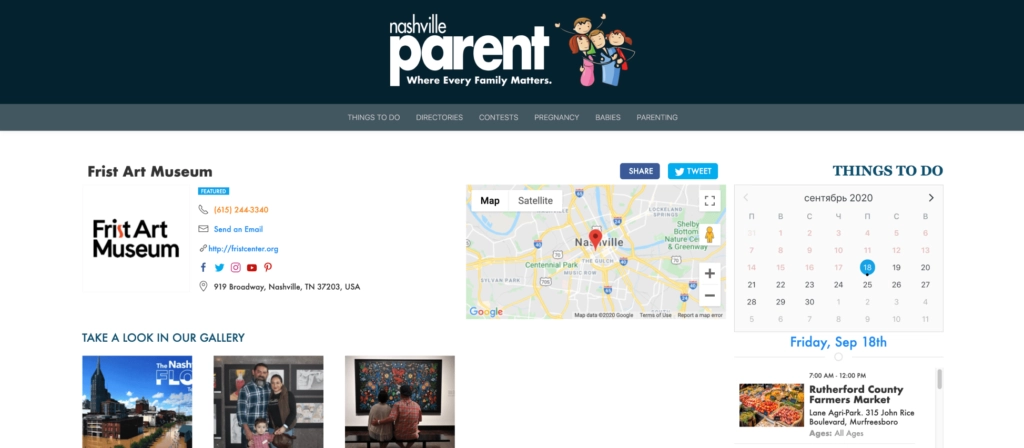
Keep NAP Consistency
Keeping NAP (Name, Address, Phone number) consistent is crucial when it comes to SEO for Google Maps.
Having consistent NAP information across your website is essential as both people and search engines can identify the correct data amidst various addresses, names, and phone numbers.
Inaccurate NAP details can lead to frustration among users, potentially resulting in the loss of valuable customers. Additionally, Google relies on your NAP to determine the legitimacy of your business, influencing trust-building with potential customers.
Maintaining consistent NAP information ensures that customers and search engines can easily locate and contact your business. This fosters trust, credibility, and a positive user experience, ultimately contributing to higher rankings on Google Maps.
Create Local Content
In local search, generating high-quality content with a hyper-local focus is crucial. You can create articles highlighting your services, local events, news, or stories relevant to your area. It’s important to incorporate location-based keywords and focus on your products or services.
The more specific and detailed your keyword phrases are, the greater the likelihood of appearing in Google’s search results for relevant queries.
By producing local content tailored to your target audience‘s interests and location, you increase the chances of attracting relevant traffic, engaging with local customers, and boosting your visibility on Google Maps.
Remember, when creating local content, aim to provide value, address local needs, and establish your business as an authoritative source within your community. This will help elevate your rankings on Google Maps and attract potential customers who are actively seeking local solutions.
Be Active On Social Media
Today’s online shoppers prefer engaging with local businesses through social media. In fact, 57% of customers want to buy from brands they follow and interact with on social platforms.
To increase your local presence, ensure your business has active profiles on social platforms.
Regardless of your frequency, prioritize maintaining a consistent social media presence. Actively engage with your audience, respond to their inquiries, share local content, and express gratitude for their support.
By actively participating on social media, you establish connections, build brand loyalty, and attract potential customers. This engagement signals to Google that your business is active and relevant, positively influencing your ranking on Google Maps.
Don’t Stop With Google
Yes, we’re focused on Google Maps SEO, but this isn’t the only business listing you should be focused on.
For increased visibility, you’ll want to have a strong business presence across various maps and directories. This can include platforms like Yelp, Better Business Bureau, Facebook, and more. The more listings you have, the more visible you’ll be.
However, this also means that you need to maintain consistency across each of these profiles. By using a local business listing management tool like Braxy Hub, you’ll be able to effortlessly manage listings across all platforms. This means you can get more backlinks, respond to reviews, and drive more customers to your business – all in one place.
Conclusion
If you want to win at local search results, then you need to have a strong presence on Google Maps. Get this right, and you’ll boost your business visibility in a really big way.
The tips and tactics above are all easy to implement and can significantly enhance your SEO for Google Maps. Try them out, and see just how much of a difference better Google Maps SEO will make to your business!
Looking for more local business and SEO tips? Check out some of the guides below.
Related Content
![]() tom
tom
[ad_2]
Source link








